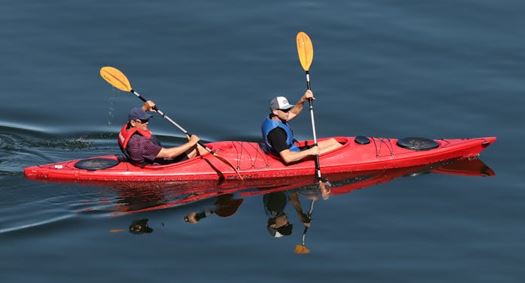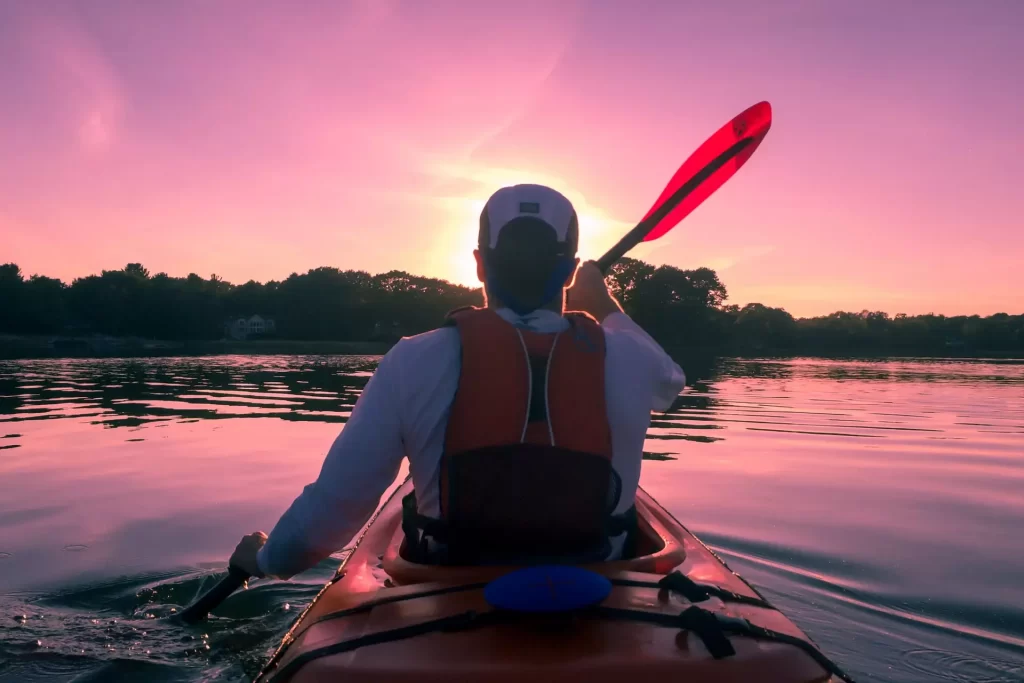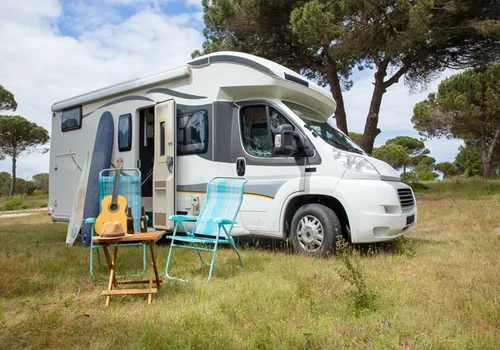Ah, the age-old debate: canoe vs. tandem kayak! Both are fantastic watercraft with their own quirks, strengths, and (let’s be honest) opportunities for bonding moments and mishaps. Having tackled the waters in a tandem kayak and occasionally dabbled in a canoe, I’ve gained some insight into the two. Let’s dive into what sets them apart—and where they shine.
Table of Contents
1. Design & Comfort

- Canoe: Think of a canoe as the family minivan of the water world. They’re generally more spacious, with a wider, open design, which makes it easy to load up coolers, fishing gear, even a picnic table if you’re feeling ambitious. You sit on benches (or kneel if you’re hardcore), and there’s plenty of legroom. Canoes also have a higher center of gravity, which means you can stand up or shift around—though don’t go too wild, or you’ll be taking a swim.
- Tandem Kayak: The tandem kayak, on the other hand, feels more like a compact sports car. It’s sleek, low, and keeps you closer to the water. You sit in comfy, contoured seats (usually with back support), and your legs are stretched out in front of you. It’s cozy and aerodynamic, which makes it faster but more compact. There’s less room to roam, and you’ll need to be a bit more strategic with storage.
Winner: If you love space, go canoe. If you like a snug, low-to-the-water feel, tandem kayak is for you.
2. Paddling & Steering
- Canoe: Paddling a canoe is more like a calm, occasional “plop-plop” on each side, with a single-bladed paddle. This setup gives you versatility: you can go at your own pace, switch sides, and take leisurely breaks. However, steering requires a bit of technique—especially with just two people—and you’ll quickly realize how much you love a good “J-stroke” to avoid going in circles.
- Tandem Kayak: Now, paddling a tandem kayak is more rhythmic, like synchronized swimming (if you’re good) or synchronized chaos (if you’re us). Each person has a double-bladed paddle, which lets you build up speed and stay on course with alternating strokes. It’s smoother, faster, and requires more teamwork—but when you’re in sync, you’ll cut through the water like a hot knife through butter.
Winner: Tandem kayak for speed and efficiency; canoe if you’re not in a rush and enjoy a leisurely pace.
3. Stability & Tipping
- Canoe: Canoes tend to be super stable on flat water. Their wide design and open top make them a perfect choice for those looking for a calm, stable ride, even with gear or a small child or pet onboard. But! If you do manage to tip one (don’t ask how I know), it’s like the Titanic—flipping it back over and bailing water is no small feat.
- Tandem Kayak: Tandem kayaks sit lower in the water, making them surprisingly stable even on choppy days. However, if things get wobbly, it’s usually easy to correct without capsizing, and the closed cockpit keeps water from flooding in. And if you do capsize? With a little practice, righting and re-entering a kayak is more manageable than in a canoe.
Winner: Canoe for flat water, tandem kayak if you’re venturing into rougher waters.
4. Portability & Transport
- Canoe: Canoes are longer, bulkier, and generally heavier. They take some muscle to lift onto a car or carry to the water. And with a canoe, you often need a roof rack, straps, and possibly an extra pair of hands to get it where it’s going. It’s like moving a sofa that floats.
- Tandem Kayak: Tandem kayaks are also a bit heavy, but their streamlined shape makes them easier to manage for two people. Many can fit on standard roof racks, and some are even designed to be carried solo if you’re brave enough. Kayaks are generally less cumbersome to transport, even if they’re still a bit awkward.
Winner: Tandem kayak for easier transport and storage.
5. Speed & Adventure
- Canoe: Canoes are great for relaxed exploration. They glide along nicely at a steady pace, making them ideal for fishing, birdwatching, or just enjoying a lazy day on the lake. They can handle rivers but aren’t the best for rapids unless you’re an experienced paddler.
- Tandem Kayak: Tandem kayaks, especially with the double-bladed paddles, can move fast. They’re perfect for thrill-seekers and anyone who wants to cover more distance. Kayaks also handle choppy water and waves better, so if you’re feeling adventurous, a tandem kayak might be the better choice.
Winner: Tandem kayak for speed and adventure; canoe for a chill day out.
Final Verdict: Which Is Right for You?
- Choose a Canoe If: You’re into leisurely paddling, need space for gear or extra passengers, and enjoy stability. Canoes are great for lakes, fishing, and slow rivers.
- Choose a Tandem Kayak If: You want speed, have a need for adventure, and love paddling in sync with a partner. Tandem kayaks are better for choppy waters, coastal paddling, and, yes, testing relationship dynamics in real-time.
Conclusion
At the end of the day, each has its own charm. Canoes are for when you want to relax and explore at a leisurely pace, while tandem kayaks are for when you want a faster, more adventurous experience. If you can, try both—just remember, the true adventure is keeping your partner in sync (and mostly dry)!


